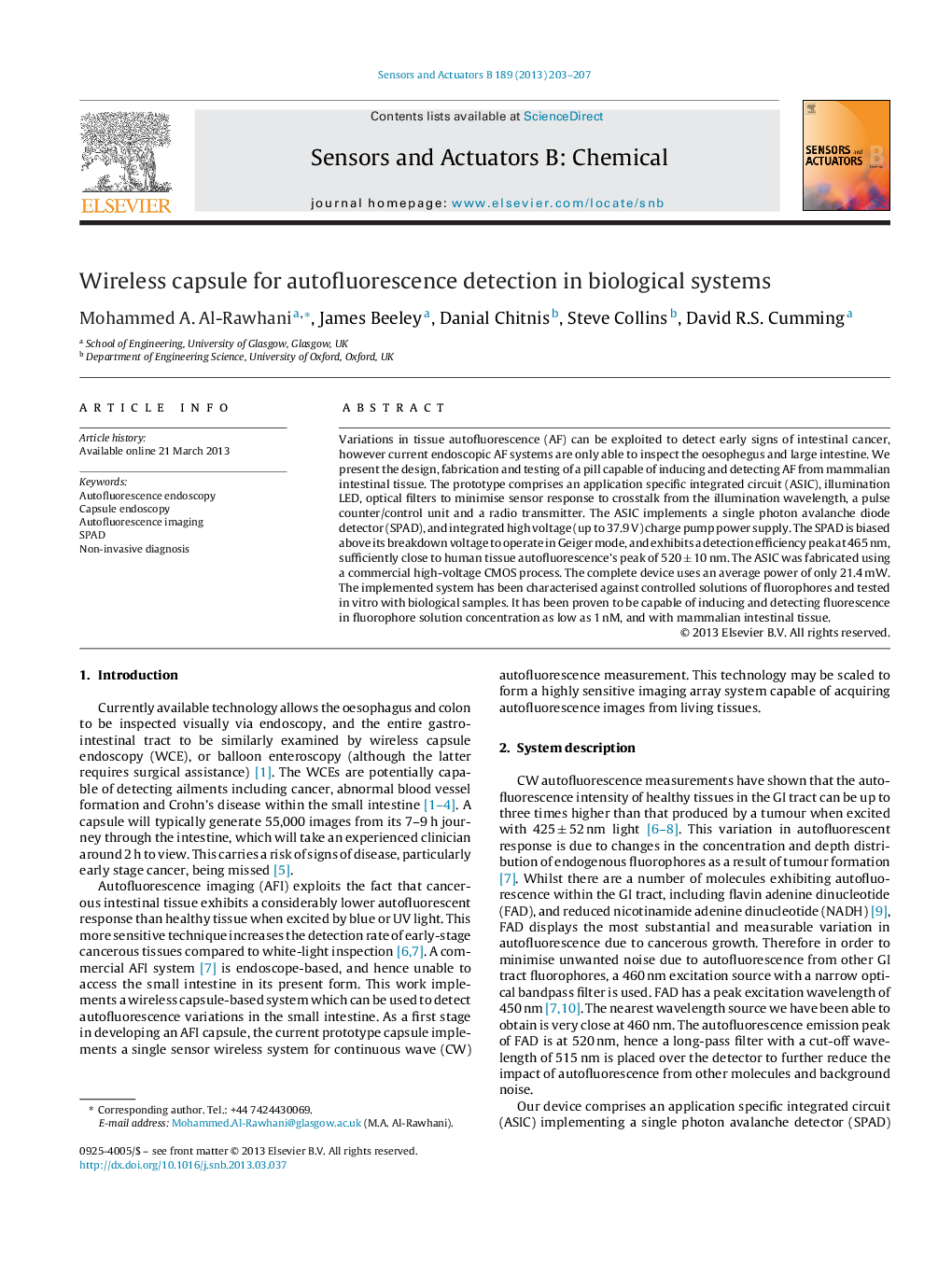| Article ID | Journal | Published Year | Pages | File Type |
|---|---|---|---|---|
| 740224 | Sensors and Actuators B: Chemical | 2013 | 5 Pages |
Variations in tissue autofluorescence (AF) can be exploited to detect early signs of intestinal cancer, however current endoscopic AF systems are only able to inspect the oesophegus and large intestine. We present the design, fabrication and testing of a pill capable of inducing and detecting AF from mammalian intestinal tissue. The prototype comprises an application specific integrated circuit (ASIC), illumination LED, optical filters to minimise sensor response to crosstalk from the illumination wavelength, a pulse counter/control unit and a radio transmitter. The ASIC implements a single photon avalanche diode detector (SPAD), and integrated high voltage (up to 37.9 V) charge pump power supply. The SPAD is biased above its breakdown voltage to operate in Geiger mode, and exhibits a detection efficiency peak at 465 nm, sufficiently close to human tissue autofluorescence's peak of 520 ± 10 nm. The ASIC was fabricated using a commercial high-voltage CMOS process. The complete device uses an average power of only 21.4 mW. The implemented system has been characterised against controlled solutions of fluorophores and tested in vitro with biological samples. It has been proven to be capable of inducing and detecting fluorescence in fluorophore solution concentration as low as 1 nM, and with mammalian intestinal tissue.
